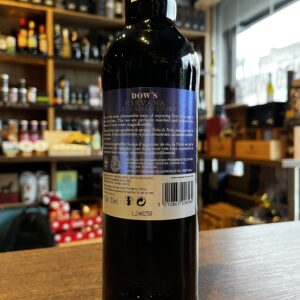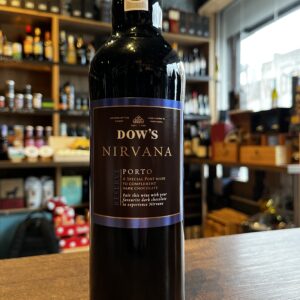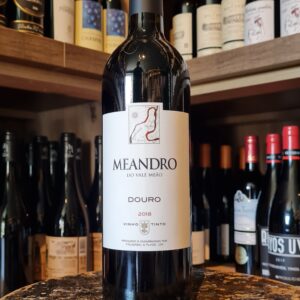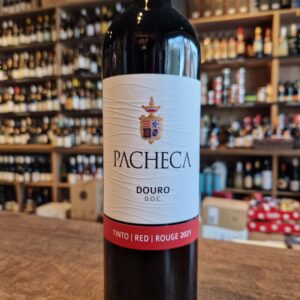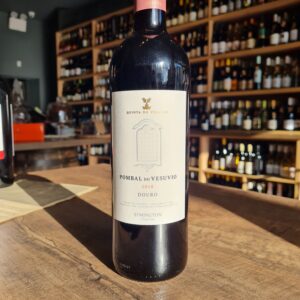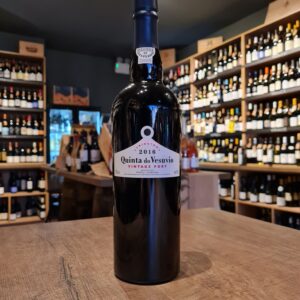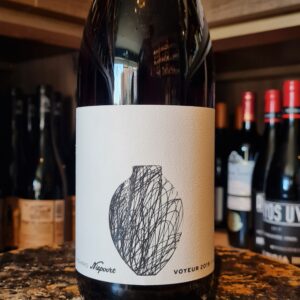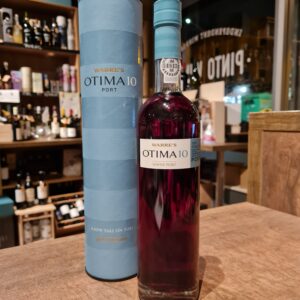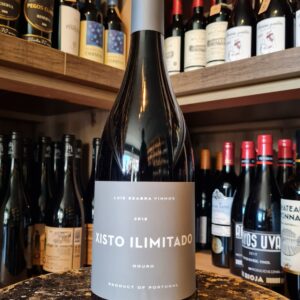-
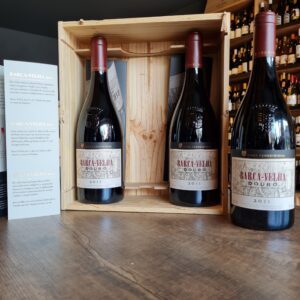 Casa Ferreirinha, was acquired by Sogrape Vinhos in 1987, its wines are synonymous with time and art. This has happened since its foundation, in the 18th century, by the hand of Bernardo Ferreira, who saw the formula refined by his descendants, especially by his granddaughter Dona Antónia Adelaide Ferreira, who affectionately became known as "Ferreirinha" or "Ferreirinha-da-Régua" for the people of that land. Through the hands of Dona Antónia, who twice widowed herself at the head of a large company, Ferreira consolidated itself admirably. Her entrepreneurial spirit taught her to foresee, decide, create, teach and love, making her a figure of great projection and charisma. Barca Velha is the result of the passion of Fernando Nicolau de Almeida (Casa Ferreirinha Head Winemaker in 1952), who envisioned a high quality Douro Red Wines made with the aging potential of Vintage Ports. The first harvest was 1952. Barca Velha is only released in exceptional years, current head winemaker Luis Sottomayor began his career at this house as an apprentice learning directly from Fernando Nicolau D'Almeida. ''2011 was an extraordinary year-one of the best ever in Douro-Intense and exceptional quality. When this wine was born, we soon realized that it would be destined for Barca-Velha”. But even so, it was necessary to pass the great test of time with distinction. In the barrels, first, and then in the bottle, it was followed and evaluated over nine years, until the final decision was made.
Casa Ferreirinha, was acquired by Sogrape Vinhos in 1987, its wines are synonymous with time and art. This has happened since its foundation, in the 18th century, by the hand of Bernardo Ferreira, who saw the formula refined by his descendants, especially by his granddaughter Dona Antónia Adelaide Ferreira, who affectionately became known as "Ferreirinha" or "Ferreirinha-da-Régua" for the people of that land. Through the hands of Dona Antónia, who twice widowed herself at the head of a large company, Ferreira consolidated itself admirably. Her entrepreneurial spirit taught her to foresee, decide, create, teach and love, making her a figure of great projection and charisma. Barca Velha is the result of the passion of Fernando Nicolau de Almeida (Casa Ferreirinha Head Winemaker in 1952), who envisioned a high quality Douro Red Wines made with the aging potential of Vintage Ports. The first harvest was 1952. Barca Velha is only released in exceptional years, current head winemaker Luis Sottomayor began his career at this house as an apprentice learning directly from Fernando Nicolau D'Almeida. ''2011 was an extraordinary year-one of the best ever in Douro-Intense and exceptional quality. When this wine was born, we soon realized that it would be destined for Barca-Velha”. But even so, it was necessary to pass the great test of time with distinction. In the barrels, first, and then in the bottle, it was followed and evaluated over nine years, until the final decision was made. -
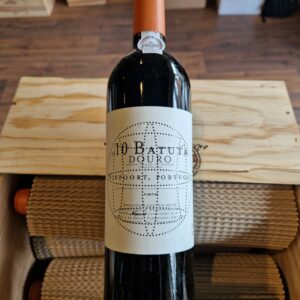 Niepoort is a family business dating back to 1842. Its winemaking tradition began in the Douro region, with the roduction of Port wine. Nowadays has a foothold in all the major Portuguese regions with still wines production outside the Douro Valley. Know-how, enthusiasm and an innovative mindset have passed down from generation to generation, making Niepoort one of the most authentic and notable Portuguese wine producers. The grapes to produce this wine come from Quinta do Carril, from a north-facing vineyard with more than 70 years, and also from old vineyards about 100 years old near Quinta de Nápoles. Niepoort sums up this elegant bottling well by saying “Batuta is a wine of extremes, having more of everything, is at the same time, the one with a more discrete behavior.” Quite so this year (and most), as the wine opens with subtlety and elegance, seeming rather mute. It is somewhat tinged by oak early in its life. That will be easily absorbed. It takes some air and patience to see what this sometimes too subtle wine has, but there is good structure underneath (and a little tannic pop that emerges with air) that should allow the wine to develop well and have the time to acquire some complexity, which is often its best feature. It has a very Burgundian feel, with a silky, graceful mid-palate. There is nothing obvious about this bottling in any year. This year, certainly, it is a Batuta that is perhaps subtle to a fault, but it will be a perfect food wine and when you are drinking it you will suddenly realize how much you like it.'' Time will tell, definitely one of the great current masters of winemaking. Not just in Portugal but in the world
Niepoort is a family business dating back to 1842. Its winemaking tradition began in the Douro region, with the roduction of Port wine. Nowadays has a foothold in all the major Portuguese regions with still wines production outside the Douro Valley. Know-how, enthusiasm and an innovative mindset have passed down from generation to generation, making Niepoort one of the most authentic and notable Portuguese wine producers. The grapes to produce this wine come from Quinta do Carril, from a north-facing vineyard with more than 70 years, and also from old vineyards about 100 years old near Quinta de Nápoles. Niepoort sums up this elegant bottling well by saying “Batuta is a wine of extremes, having more of everything, is at the same time, the one with a more discrete behavior.” Quite so this year (and most), as the wine opens with subtlety and elegance, seeming rather mute. It is somewhat tinged by oak early in its life. That will be easily absorbed. It takes some air and patience to see what this sometimes too subtle wine has, but there is good structure underneath (and a little tannic pop that emerges with air) that should allow the wine to develop well and have the time to acquire some complexity, which is often its best feature. It has a very Burgundian feel, with a silky, graceful mid-palate. There is nothing obvious about this bottling in any year. This year, certainly, it is a Batuta that is perhaps subtle to a fault, but it will be a perfect food wine and when you are drinking it you will suddenly realize how much you like it.'' Time will tell, definitely one of the great current masters of winemaking. Not just in Portugal but in the world -
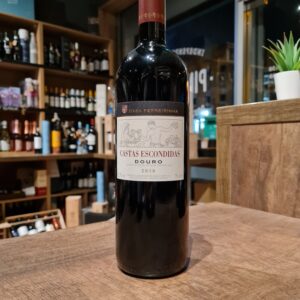 Is with wines like this one that you start uncovering the great potential of Douro wines. 'Castas Escondidas' translates as 'hidden varieties' and showcases old-vines, field-blend fruit and some of the lesser known grape varieties of the Douro Valley. What makes this drop a superior wine is not only the great quality of the terroir, region characteristics, the field blend vines used but most importantly the high intervention from skilled winemakers producing this wine. With all of these movements happening which by all means are fantastic such as natural wines, low intervention and so on, memories can be short and people will have some tendency to forget that winemakers spent hundreds of years studying the production of wine going by the scientific name of oenology and therefore they are oenologists with the main purpose being interventionists in every single process of the wine production!!! oh dear, I feel I am opening a can of worms here... As the magician himself describes “Casa Ferreirinha Castas Escondidas was designed to stage the varieties commonly used in batches of Port Wine, but rarely explored and which result in a perfect combination with other more well-known varieties” , says Luís Sottomayor, the winemaker responsible for Sogrape wines in the Douro. . “The small percentage of grapes harvested from old vines gives even more special characteristics to the final batch” Great with for special occasions, quality red meats and cheeses. Be responsible and drink this wine moderately as it is one of a kind
Is with wines like this one that you start uncovering the great potential of Douro wines. 'Castas Escondidas' translates as 'hidden varieties' and showcases old-vines, field-blend fruit and some of the lesser known grape varieties of the Douro Valley. What makes this drop a superior wine is not only the great quality of the terroir, region characteristics, the field blend vines used but most importantly the high intervention from skilled winemakers producing this wine. With all of these movements happening which by all means are fantastic such as natural wines, low intervention and so on, memories can be short and people will have some tendency to forget that winemakers spent hundreds of years studying the production of wine going by the scientific name of oenology and therefore they are oenologists with the main purpose being interventionists in every single process of the wine production!!! oh dear, I feel I am opening a can of worms here... As the magician himself describes “Casa Ferreirinha Castas Escondidas was designed to stage the varieties commonly used in batches of Port Wine, but rarely explored and which result in a perfect combination with other more well-known varieties” , says Luís Sottomayor, the winemaker responsible for Sogrape wines in the Douro. . “The small percentage of grapes harvested from old vines gives even more special characteristics to the final batch” Great with for special occasions, quality red meats and cheeses. Be responsible and drink this wine moderately as it is one of a kind -
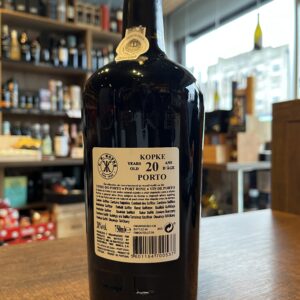
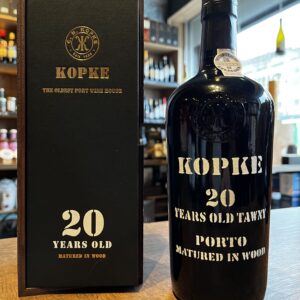 Kopke, a house specialising in aged tawny and aged white ports, is the oldest established port producer, in existence since 1638. There are special places in the world. Kopke found one of them. Quinta de São Luiz is located on the left bank of the river Douro, near Pinhão, in the parish of Tabuaço. It is an imposing estate, considered one of the most emblematic of the Douro region. The Quinta has gone through two major changes: on the one hand, the construction of the Bagaúste dam, with the consequent rise of the water level and the loss of vineyard land; on the other, the enlargement of the total area with the acquisition of several other properties in the area. The estate is made up of 125 hectares, 90 of which are planted with vines. The main grape varieties grown here are Touriga Nacional, Touriga Franca, Tinta Roriz, Tinta Cão. There are also small plots of Tinta Barroca and Souzão. The vines are classified as A, the highest grade in the Demarcated Region of the Douro. Irresistible with a starter of foie gras with aubergine and walnuts. A great choice for an endless array of desserts, such as toffee brownies, chocolate and pistachio pavé, or crostini of walnuts with chèvre. When teh weather picks up or the height of the Summer, serving this Port slightly chilly is a must.
Kopke, a house specialising in aged tawny and aged white ports, is the oldest established port producer, in existence since 1638. There are special places in the world. Kopke found one of them. Quinta de São Luiz is located on the left bank of the river Douro, near Pinhão, in the parish of Tabuaço. It is an imposing estate, considered one of the most emblematic of the Douro region. The Quinta has gone through two major changes: on the one hand, the construction of the Bagaúste dam, with the consequent rise of the water level and the loss of vineyard land; on the other, the enlargement of the total area with the acquisition of several other properties in the area. The estate is made up of 125 hectares, 90 of which are planted with vines. The main grape varieties grown here are Touriga Nacional, Touriga Franca, Tinta Roriz, Tinta Cão. There are also small plots of Tinta Barroca and Souzão. The vines are classified as A, the highest grade in the Demarcated Region of the Douro. Irresistible with a starter of foie gras with aubergine and walnuts. A great choice for an endless array of desserts, such as toffee brownies, chocolate and pistachio pavé, or crostini of walnuts with chèvre. When teh weather picks up or the height of the Summer, serving this Port slightly chilly is a must. -
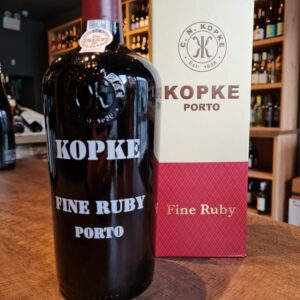 There are special places in the world. Kopke found one of them. Quinta de São Luiz is located on the left bank of the river Douro, near Pinhão, in the parish of Tabuaço. It is an imposing estate, considered one of the most emblematic of the Douro region. The Quinta has gone through two major changes: on the one hand, the construction of the Bagaúste dam, with the consequent rise of the water level and the loss of vineyard land; on the other, the enlargement of the total area with the acquisition of several other properties in the area. The estate is made up of 125 hectares, 90 of which are planted with vines. The main grape varieties grown here are Touriga Nacional, Touriga Franca, Tinta Roriz, Tinta Cão. There are also small plots of Tinta Barroca and Souzão. The vines are classified as A, the highest grade in the Demarcated Region of the Douro.
There are special places in the world. Kopke found one of them. Quinta de São Luiz is located on the left bank of the river Douro, near Pinhão, in the parish of Tabuaço. It is an imposing estate, considered one of the most emblematic of the Douro region. The Quinta has gone through two major changes: on the one hand, the construction of the Bagaúste dam, with the consequent rise of the water level and the loss of vineyard land; on the other, the enlargement of the total area with the acquisition of several other properties in the area. The estate is made up of 125 hectares, 90 of which are planted with vines. The main grape varieties grown here are Touriga Nacional, Touriga Franca, Tinta Roriz, Tinta Cão. There are also small plots of Tinta Barroca and Souzão. The vines are classified as A, the highest grade in the Demarcated Region of the Douro. -
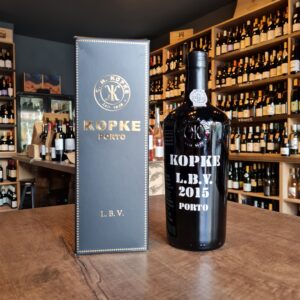 The wine owes its name to the port city of Porto, but comes from the Douro Valley. Here you will find one of the most spectacular wine landscapes in the world with terraced vineyards on steep slopes. It is scorching hot in summer, freezing cold in winter. The Douro Valley was already demarcated in 1756, making it the oldest regulated area of origin in the world. Port itself is a fortified wine. By interrupting the fermentation by adding wine alcohol, the wine retains its residual sugars and also gets its relatively high alcohol percentage. Port does not stand for a single wine, but for a whole series of wines. Wines with very different styles and tastes due to differences in the blending and aging of the base wines. In 1636 Nicolau Kopkë settled in Portugal as 'consul general' (a kind of representative) of the Hanseatic League, a partnership between merchants and cities, during the Middle Ages. Two years later, the first bottles of wine were shipped to Northern Europe. And when Nicolau bought a farm in the Douro in 1781, he changed from buyer to producer. Port wine soon became the focus of the company. Kpke now is one of the oldest Port Wine House. Recognized by the variety and distinction of its Ports, Kopke represents in XXI century a symbol of quality and prestige. LBV stands for Late Bottle Vintage and is the result of single year's harvest of superior quality, aged in oak Vats. Balancing the intensity of flavours, the Late Bottled Vintage Port is the ideal choice to serve with main courses of meat, like filet mignon encrusted four peppers and veal cutlet with Bérnaise sauce. Its versatility knows no borders, being perfect to combine with an exuberant cheesecake of chocolate mint, a pear and chocolate mille-feuille or simply to enjoy with cheeses of medium intensity.
The wine owes its name to the port city of Porto, but comes from the Douro Valley. Here you will find one of the most spectacular wine landscapes in the world with terraced vineyards on steep slopes. It is scorching hot in summer, freezing cold in winter. The Douro Valley was already demarcated in 1756, making it the oldest regulated area of origin in the world. Port itself is a fortified wine. By interrupting the fermentation by adding wine alcohol, the wine retains its residual sugars and also gets its relatively high alcohol percentage. Port does not stand for a single wine, but for a whole series of wines. Wines with very different styles and tastes due to differences in the blending and aging of the base wines. In 1636 Nicolau Kopkë settled in Portugal as 'consul general' (a kind of representative) of the Hanseatic League, a partnership between merchants and cities, during the Middle Ages. Two years later, the first bottles of wine were shipped to Northern Europe. And when Nicolau bought a farm in the Douro in 1781, he changed from buyer to producer. Port wine soon became the focus of the company. Kpke now is one of the oldest Port Wine House. Recognized by the variety and distinction of its Ports, Kopke represents in XXI century a symbol of quality and prestige. LBV stands for Late Bottle Vintage and is the result of single year's harvest of superior quality, aged in oak Vats. Balancing the intensity of flavours, the Late Bottled Vintage Port is the ideal choice to serve with main courses of meat, like filet mignon encrusted four peppers and veal cutlet with Bérnaise sauce. Its versatility knows no borders, being perfect to combine with an exuberant cheesecake of chocolate mint, a pear and chocolate mille-feuille or simply to enjoy with cheeses of medium intensity. -
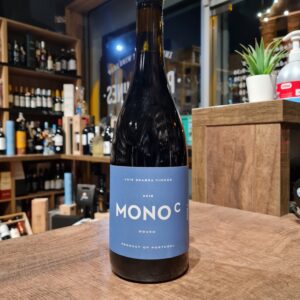 Luis Seabra is a producer that is at the forefront of the “new Douro” movement. Rather than making table wines that are, for all intents and purposes, “Little Ports,” Luis has taken a more balanced, restrained approach to winemaking in the oldest demarcated wine region in the world. His guiding principles are showcasing terroir and nuance above power and extraction. Bright, mineral driven and elegant, Luis’ wines are typically exposés of soil type. With the Mono C, he is taking a look at a particular variety – in this case, Castelão. While Castelão is a grape that is typically found further south in Portugal, Luis has found a mono-planted plot of the light-skinned grape in the Douro and is working his magic to craft a wine of unparalleled delicacy and elegance. Would pair it with charcuterie, grilled pork dishes, roasted poultry
Luis Seabra is a producer that is at the forefront of the “new Douro” movement. Rather than making table wines that are, for all intents and purposes, “Little Ports,” Luis has taken a more balanced, restrained approach to winemaking in the oldest demarcated wine region in the world. His guiding principles are showcasing terroir and nuance above power and extraction. Bright, mineral driven and elegant, Luis’ wines are typically exposés of soil type. With the Mono C, he is taking a look at a particular variety – in this case, Castelão. While Castelão is a grape that is typically found further south in Portugal, Luis has found a mono-planted plot of the light-skinned grape in the Douro and is working his magic to craft a wine of unparalleled delicacy and elegance. Would pair it with charcuterie, grilled pork dishes, roasted poultry -
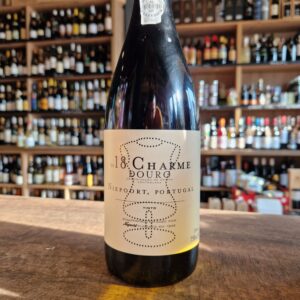 Another excellent wine from Niepoort. Charme is all about elegance and balance, achieved by taking special attention to the smallest details during the entire wine-making process. Made in traditional stone lagares with 100% grape stems, Charme’s elegance is achieved using grapes from very old vineyards in Vale de Mendiz, on the banks of the Pinhão river. Pair it with mushrooms and game dishes, such as partridge or pheasant
Another excellent wine from Niepoort. Charme is all about elegance and balance, achieved by taking special attention to the smallest details during the entire wine-making process. Made in traditional stone lagares with 100% grape stems, Charme’s elegance is achieved using grapes from very old vineyards in Vale de Mendiz, on the banks of the Pinhão river. Pair it with mushrooms and game dishes, such as partridge or pheasant -
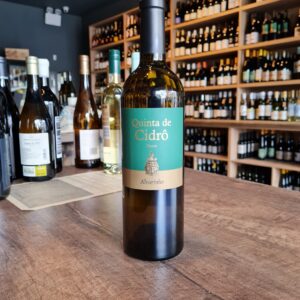 Quinta de Cidrô presents the first Alvarinho produced in the Douro, another superb result of the continuous innovation that takes place in the vineyards of the property. The idea to plant Alvarinho in the Douro came from their ambition to produce a high quality white monovarietal from a Portuguese grape variety. A wine marked by fine and delicate aromas of citrus fruit and orange blossom, which presents an excellent aromatic complexity. Expressive and personalized, it is above all a full-bodied Douro wine, revealing flavours that can be guessed at in the aroma. A long and distinct Alvarinho, determined by a crisp acidity and a tasty minerality.
Quinta de Cidrô presents the first Alvarinho produced in the Douro, another superb result of the continuous innovation that takes place in the vineyards of the property. The idea to plant Alvarinho in the Douro came from their ambition to produce a high quality white monovarietal from a Portuguese grape variety. A wine marked by fine and delicate aromas of citrus fruit and orange blossom, which presents an excellent aromatic complexity. Expressive and personalized, it is above all a full-bodied Douro wine, revealing flavours that can be guessed at in the aroma. A long and distinct Alvarinho, determined by a crisp acidity and a tasty minerality. -
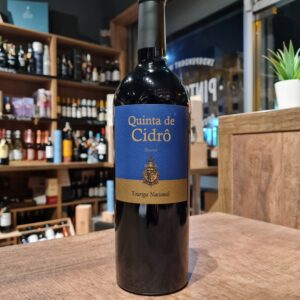 I have been chasing a 100% Touriga Nacional for a while now, with some disappointments in the middle. Mostly due to knowing the full potential of Touriga Nacional and what can be done with it. Was loosing faith(Poor supplier offering in Ireland) and was actively looking to import myself a few options until I stumbled upon this gem. This wine is the example where no one should judge a book by its cover. Across all Companhia Velha Wines the labels are just minimal, classy but not in the way you would think. Has a bit of I don't give a damn about them and that subtlety actually impresses me even further. No distractions to be added here!!! Bear in mind this winery was one of the first if not the first Wine family business(1756) in the Douro Valley(1763) and it was full integrated when it became the first official wine region in the world. Quinta de Cidrô is located at São João da Pesqueira, which is one of the most highly regarded areas of Douro Valley. Throughout the last 20 years, Cidrô has been transformed into an experimental-model vineyard for the entire region. In virgin soils, cutting edge techniques were employed to plant 150 ha of the best varieties, creating one of the largest surfaces of single vineyard in the entire Douro Region. In the most privileged location, international varieties perform equally well as the local grapes. Chardonnay, Sauvignon Blanc, Viognier, Pinot Noir, and the adaptable Cabernet Sauvignon are some of the foreign varieties that here express their best qualities when vinified by the extensive winemaking know-how present at the Company. Touriga Nacional is Portugal’s star variety and the dominant red grape at Quinta de Cidrô. The altitude of this Quinta provides excellent freshness and levels of acidity, ideal conditions for an elegant red wine. Touriga Nacional is a versatile grape, with its main characteristics being the small bundle, its low yield and jagged leaf. Its presence in the vines is intimidating, as it requires a constant care for its wild and rebellious character of growing disorderly. At Quinta de Cidrô, Touriga Nacional was adapted to a less habitual place, as it was mostly planted in low altitude vineyards and subject to high temperatures; the opposite of Quinta de Cidrô. Personally I love it on its own with at least 45 minutes decanting or enjoy really slow the very first drop. Winemakers suggestion for this stunning wine are: Rump Steak, Pork Leg, Parmigiano Cheese and Dark Chocolate.
I have been chasing a 100% Touriga Nacional for a while now, with some disappointments in the middle. Mostly due to knowing the full potential of Touriga Nacional and what can be done with it. Was loosing faith(Poor supplier offering in Ireland) and was actively looking to import myself a few options until I stumbled upon this gem. This wine is the example where no one should judge a book by its cover. Across all Companhia Velha Wines the labels are just minimal, classy but not in the way you would think. Has a bit of I don't give a damn about them and that subtlety actually impresses me even further. No distractions to be added here!!! Bear in mind this winery was one of the first if not the first Wine family business(1756) in the Douro Valley(1763) and it was full integrated when it became the first official wine region in the world. Quinta de Cidrô is located at São João da Pesqueira, which is one of the most highly regarded areas of Douro Valley. Throughout the last 20 years, Cidrô has been transformed into an experimental-model vineyard for the entire region. In virgin soils, cutting edge techniques were employed to plant 150 ha of the best varieties, creating one of the largest surfaces of single vineyard in the entire Douro Region. In the most privileged location, international varieties perform equally well as the local grapes. Chardonnay, Sauvignon Blanc, Viognier, Pinot Noir, and the adaptable Cabernet Sauvignon are some of the foreign varieties that here express their best qualities when vinified by the extensive winemaking know-how present at the Company. Touriga Nacional is Portugal’s star variety and the dominant red grape at Quinta de Cidrô. The altitude of this Quinta provides excellent freshness and levels of acidity, ideal conditions for an elegant red wine. Touriga Nacional is a versatile grape, with its main characteristics being the small bundle, its low yield and jagged leaf. Its presence in the vines is intimidating, as it requires a constant care for its wild and rebellious character of growing disorderly. At Quinta de Cidrô, Touriga Nacional was adapted to a less habitual place, as it was mostly planted in low altitude vineyards and subject to high temperatures; the opposite of Quinta de Cidrô. Personally I love it on its own with at least 45 minutes decanting or enjoy really slow the very first drop. Winemakers suggestion for this stunning wine are: Rump Steak, Pork Leg, Parmigiano Cheese and Dark Chocolate. -
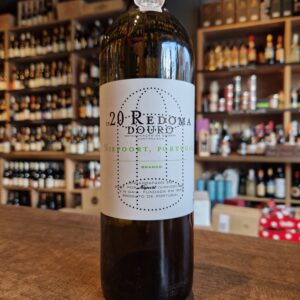 This oaky white will appeal to Graves or Burgundy lovers. The grapes used for the Redoma Branco originate from old vines growing on the right bank of the Douro River, at an altitude of between 400 and 600 metres. These vines predominantly grow in mica-schist soils, which, in combination with the complexity of the various grape varieties typical of the Douro region, create delicate wines full of freshness and minerality. Food suggestions-Oysters, oven-baked fish, poultry and other white meats. Vegetarian options: dishes based on root vegetables (turnips, sweet potato, beetroot), Caesar salad, cheese.
This oaky white will appeal to Graves or Burgundy lovers. The grapes used for the Redoma Branco originate from old vines growing on the right bank of the Douro River, at an altitude of between 400 and 600 metres. These vines predominantly grow in mica-schist soils, which, in combination with the complexity of the various grape varieties typical of the Douro region, create delicate wines full of freshness and minerality. Food suggestions-Oysters, oven-baked fish, poultry and other white meats. Vegetarian options: dishes based on root vegetables (turnips, sweet potato, beetroot), Caesar salad, cheese. -
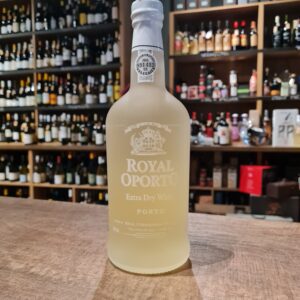 The Port is by difinition, generous and full-bodied wine, produced in the region Douro- the demarcated region of the world's oldest wines. Made from grapes traditionally used in the region, its wine making process is characterized by adding brandy to the wine in full fermentation. This type of port that inspires moments and new forms of consumption, which we recommend be served as Port Tonic. Classic serving would be as a chilled aperitif, but also you could be adventurous and make a ''Caipi Royal'' or just serve it on the rocks with an orange slice.
The Port is by difinition, generous and full-bodied wine, produced in the region Douro- the demarcated region of the world's oldest wines. Made from grapes traditionally used in the region, its wine making process is characterized by adding brandy to the wine in full fermentation. This type of port that inspires moments and new forms of consumption, which we recommend be served as Port Tonic. Classic serving would be as a chilled aperitif, but also you could be adventurous and make a ''Caipi Royal'' or just serve it on the rocks with an orange slice. -
Out of stock
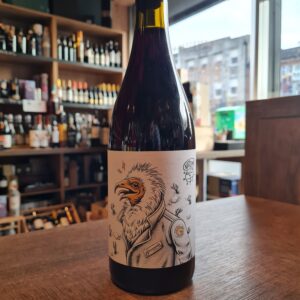 Ricardo Alves and Frederico Machado visited Bemposta for the first time together in 2017. They were on the Portuguese back roads in the Parque Natural das Arribas do Douro, with its wealth of ancient, indigenous and largely forgotten grapevines chaotically perched on the extreme slopes on the Douro river gorge, when they came upon the perfect location for their life project, the place to which they would commit their youth. They set out to rediscover and revitalize an ancient wine culture whose local home winegrowers have just barely kept the faint bloodline of their vinous history from extinction. Trás-os-Montes is a large, but not too well known, wine region of north eastern Portugal (Translation: behind the Mountains), is where the Arribas Wine Company are based and both are very passionate have been making some very interesting wines. Saroto Tinto is made from a small, old parcel of vines comprised of old-fashioned red and white Douro varieties. The resultant wine is full of wild forest fruit, lots of berries with a kick of natural sourness. Plenty of fresh acidity adds juiciness and balances the rustic, grippy tannins, making for quite a light red. Earthy minerality adds extra complexity and the finish is long and moreish. Its bottled unfined and unfiltered so may have natural sediment in the bottle.
Ricardo Alves and Frederico Machado visited Bemposta for the first time together in 2017. They were on the Portuguese back roads in the Parque Natural das Arribas do Douro, with its wealth of ancient, indigenous and largely forgotten grapevines chaotically perched on the extreme slopes on the Douro river gorge, when they came upon the perfect location for their life project, the place to which they would commit their youth. They set out to rediscover and revitalize an ancient wine culture whose local home winegrowers have just barely kept the faint bloodline of their vinous history from extinction. Trás-os-Montes is a large, but not too well known, wine region of north eastern Portugal (Translation: behind the Mountains), is where the Arribas Wine Company are based and both are very passionate have been making some very interesting wines. Saroto Tinto is made from a small, old parcel of vines comprised of old-fashioned red and white Douro varieties. The resultant wine is full of wild forest fruit, lots of berries with a kick of natural sourness. Plenty of fresh acidity adds juiciness and balances the rustic, grippy tannins, making for quite a light red. Earthy minerality adds extra complexity and the finish is long and moreish. Its bottled unfined and unfiltered so may have natural sediment in the bottle. -
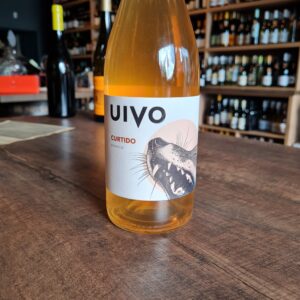 Uivo, a howl back to Nature! Naturally farmed Moscatel Galego, Branco Wine grapes with minimal intervention in the cellar, 4 months of skin contact in cement tanks. Folias de Baco was started in 2007 by young, innovative winemaker, Tiago Sampaio, who was inspired by his grandfather’s vineyard work. He has a vivacious curiosity and loves to experiment at every step of the winemaking/growing processes. He has studied agricultural engineering and has a PhD in Viticulture and Enology from Oregon State University, where he picked up on modern philosophies and aesthetics of winemaking, never forgetting his Douro roots. Folias de Baco is in the Alto Douro, in the sub-region of Cima-Corgo where the land is very tough and challenging at a higher altitude, but it is an expression of traditional melding with modern techniques. The ‘Uivo Curtido’ is comprised of 100% moscatel galego from 35+ year old vines in soils spattered with schist and granite. It is unfined and unfiltered. As tasty as it looks. Organically grown, low-intervention/natural wine, vegan. Have fun with it
Uivo, a howl back to Nature! Naturally farmed Moscatel Galego, Branco Wine grapes with minimal intervention in the cellar, 4 months of skin contact in cement tanks. Folias de Baco was started in 2007 by young, innovative winemaker, Tiago Sampaio, who was inspired by his grandfather’s vineyard work. He has a vivacious curiosity and loves to experiment at every step of the winemaking/growing processes. He has studied agricultural engineering and has a PhD in Viticulture and Enology from Oregon State University, where he picked up on modern philosophies and aesthetics of winemaking, never forgetting his Douro roots. Folias de Baco is in the Alto Douro, in the sub-region of Cima-Corgo where the land is very tough and challenging at a higher altitude, but it is an expression of traditional melding with modern techniques. The ‘Uivo Curtido’ is comprised of 100% moscatel galego from 35+ year old vines in soils spattered with schist and granite. It is unfined and unfiltered. As tasty as it looks. Organically grown, low-intervention/natural wine, vegan. Have fun with it -
Out of stock
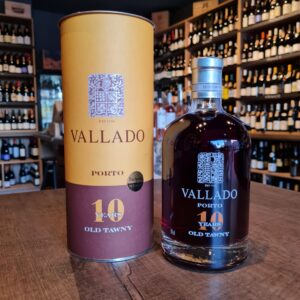 Quinta do Vallado, established in 1716, is one of the oldest and most famous Quintas in the Douro Valley. It once belonged to the legendary Dona Antonia Adelaide Ferreira, and still belongs to her descendents. Produces both still and port wines. This eighteenth-century Douro wine estate is actually one of the most modern-looking in Portugal. Although the team uses the traditional panoply of indigenous grapes, its methods are bang up to date and the results are nothing short of sensational. Tawny ports are wines usually made from red grapes that are aged in wooden barrels exposing them to gradual oxidation and evaporation. As a result of this oxidation, they mellow to a golden-brown color. The exposure to oxygen imparts "nutty" flavours to the wine, which is blended to match the house style. This port is really best enjoyed with a good strong cheese board. Think mature hard cheeses and salty blues. Rich and flavoursome to match with the intense flavours of the port.
Quinta do Vallado, established in 1716, is one of the oldest and most famous Quintas in the Douro Valley. It once belonged to the legendary Dona Antonia Adelaide Ferreira, and still belongs to her descendents. Produces both still and port wines. This eighteenth-century Douro wine estate is actually one of the most modern-looking in Portugal. Although the team uses the traditional panoply of indigenous grapes, its methods are bang up to date and the results are nothing short of sensational. Tawny ports are wines usually made from red grapes that are aged in wooden barrels exposing them to gradual oxidation and evaporation. As a result of this oxidation, they mellow to a golden-brown color. The exposure to oxygen imparts "nutty" flavours to the wine, which is blended to match the house style. This port is really best enjoyed with a good strong cheese board. Think mature hard cheeses and salty blues. Rich and flavoursome to match with the intense flavours of the port. -
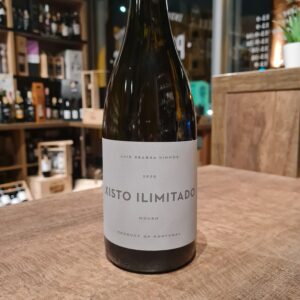 Another under the radar Portuguese White. This drop is now considered one of the new best contemporanean whites in Portugal. Produced by Luis Seabra, who worked for more than 10 years as an oenologist for Dirk Niepoort and finally started to follow his own path in 2012. The name he gives to his wines is indicative of his vision of wine: Xisto (Schist). He makes very pure wines that reflect their terroir. Luis Seabra sets a new standard in the Douro with his pure wines. Xisto Ilimitado, is a Portuguese analogue of the idea of a "village-level" Burgundy. A blend of six varieties planted in three sub-areas of the Douro, Ilimitado is a glimpse of the appellation's schist soil. Luis Seabra, has concentrated his production on the different soil types of the valley. Bright, concentrated and fresh, Xisto Ilimitado is an excellent introduction to the new Douro. Vineyards located in Cima Corgo. The vines are between 30 and 45 years old, planted in micaceous schist at an altitude of 500 to 600 m, and are a sub-region that experiences extreme highs and lows in terms of temperature, with one of the largest day-night temperature deltas in Portugal. As such, the fruit experiences an extended resting period. Annual rainfall of 400 mm typical of the region. Goes wonderfully with roasted poultry, white fish and seafood, and especially with the spiciest preparations
Another under the radar Portuguese White. This drop is now considered one of the new best contemporanean whites in Portugal. Produced by Luis Seabra, who worked for more than 10 years as an oenologist for Dirk Niepoort and finally started to follow his own path in 2012. The name he gives to his wines is indicative of his vision of wine: Xisto (Schist). He makes very pure wines that reflect their terroir. Luis Seabra sets a new standard in the Douro with his pure wines. Xisto Ilimitado, is a Portuguese analogue of the idea of a "village-level" Burgundy. A blend of six varieties planted in three sub-areas of the Douro, Ilimitado is a glimpse of the appellation's schist soil. Luis Seabra, has concentrated his production on the different soil types of the valley. Bright, concentrated and fresh, Xisto Ilimitado is an excellent introduction to the new Douro. Vineyards located in Cima Corgo. The vines are between 30 and 45 years old, planted in micaceous schist at an altitude of 500 to 600 m, and are a sub-region that experiences extreme highs and lows in terms of temperature, with one of the largest day-night temperature deltas in Portugal. As such, the fruit experiences an extended resting period. Annual rainfall of 400 mm typical of the region. Goes wonderfully with roasted poultry, white fish and seafood, and especially with the spiciest preparations


